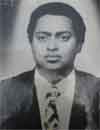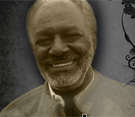The rise and demise of EFLNA/ENASA (1970-1979



"Most Eritrean mass organizations, either at home or abroad, were actively created by either the ELF or the EPLF, EFLNA's relatively uniqueness was that it formed independently of any existing pro-independence movement in Eritrea and sought to retain a measure of autonomy throughout its life"(Gaim Kibreab)
Researched and compiled by Resoum Kidane 22-5-2019
Here is a brief history of EFLNA that shows how it emerged in 1970 and ceased in 1979. The overall purpose of this section is to provide a historically informed background to the EFLNA’s rise and demise. Harper describes the formation of EFLNA as perhaps the most powerful Eritrean nationalist organization, aside from the ELF and EPLF.
Harper adds that as a former leader of EFLNA’s Chicago chapter, now a high-ranking government official in Eritrea, stated.”EFLNA’s contribution to the armed struggle was explicitly recognized as one of the most important mass organizations for the armed struggle, materially, publicity wise, and in the mobilization of Eritreans outside the country. The influence of EFLNA was not limited to North America. It was very influential in the rest of the world, including Western Europe, Australia, and some parts of Africa.
Sadly, in 1979, EFLNA lost its autonomy and became part of the EPLF’s mass organization. This happened when its members split into the Association of Eritrean Women in North America (AEWNA) and the Association of Eritrean Students in North America (AESNA). Both associations were affiliated to the EPLF mass organisations, the National Union of Eritrean Women, the National and Union of Eritrean Youth and Students respectively
Unfortunately there are not many publications on EFLNA and its contribution to the Eritrean armed struggle between 1970 and 1979. A few have appeared since 2007 It would nothave been possible to make this compilation without these. I would like to acknowledge Tricia Redeker Hepner and Meharani for their contribution to document the history of EFLNA, the main source of information for this compilation.
The following section chronologically divided into:
- Early development of EFLNA
- The EFLNA relation with the EPLF from 1973 to 1977.
- The demise of EFLNA in the late 1970s
Early development of EFLNA
EFLNA emerged in 1970, when the Ethiopian army massacred 120 innocent civilians at Besikdira and another 740 civilians in Ona village, on December 16th, of that year. In protest at these atrocities a demonstration was held at the United Nations in New York by Eritrean students who had arrived to the USA between 1965 and 1970. Although most of those students were member of EUSNA, the leaders of EUSNA chose not to condemn the massacre because they didn’t want to legitimize the Eritrean Liberation Front (ELF) which was the main independence movement in Eritrea at the time. EUSNA adopted an anti-Eritrean independence position in 1969, though it included many Eritrean members (some in executive leadership position). Consequently Eritrean students began abandoning the organisation.
Adhanrt Habte recalls her reaction- and that of her colleague-following the massacres at Keren: ‘I called New York, and I asked them ESUNA leaders] if we were going to have some kind of demonstration…. And they said no. And I said, but this is not a question of Eritrea or Ethiopia, it is a question about-I think it was 1, 000 or 2, 000 people being massacred, but nobody wanted to do anything in ESUNA. But all of a sudden, someone else by the name of Dawit Belay, who is now in New York, Dewitt Belay and his group, Seyoum Zerai and some other people, they called and said we are going to have a demonstration in New York, in light of this massacre that has taken place in Keren. So we agreed, and I went. All of a sudden, I never had any Eritrean feeling or anything, but the stand that ESUNA took, I didn’t like. That really offended me.’ [Harper, 2009]
This is also confirmed by Seyoum Zerai who was one of the demonstrators in New York. Seyoum studied at New York University in the late 1960s and early 1970s. In his interview with Hapner, he briefly mentions how EFLNA emerged in 1970. According his interview
EFLNA was just beginning as a result of the position ESUNA took. “I was actually in ESUNA at the time. That was the Ethiopian Students Union in North America. Eritreans used to belong to that one, up until we create ENASA. I remember being at a meeting when they were discussing the Eritrean question. A massacre had just taken place in Keren, all these peasants shot dead by the Ethiopian forces. Some of us wanted ESUNA to release a formal statement condemning the violence. But the leaders of ESUNA refused then we broke away and formed ENASA , some of them were in executive leadership position. Factions soon arose around the Eritrean question’. [Harper, 2009]
‘We met uptown, in the apartment of a guy named Mustafa Saleh who was the first chairman of our group. We met in the international House on Claremont Avenue, in Harlem.’[Harper, 2009]
Following the demonstration at the United Nations on December 16 1970, a core group among the estimated seventy-five Eritreans who had attended it held an impromptu meeting in the late Mustafa Saleh’s Harlem apartment to discuss the formation of the organization. Some of the attendees, who came from Boston, Philadelphia, and Washington, D.C., decided to write letters to all Eritreans known to be living in the United States, to inform them about the new Eritrean movement and invite them to the first meeting in New York on February 27, 1971. At first calling themselves Eritrean Youth for Liberation, the nascent group went ahead and published one issue of a magazine called The Eritrean, [Harper]. Mehretab also states that EFLNA started out with a name, Eritrean Youth for Liberation (EYFL) in 1970 in response to the killing of civilian in Keren in December 16 of that year. And was not an outcome of an organized or planned effort by any group or individuals. He adds that before December 1970 there was no organized and publicly visible support for the Eritrean nationalist movements in North America.
Immediately after the formation of the EYFL, the organizers of the protester contacted Eritreans who lived in US and Canada who could potentially become sympathizers or supporter of the EYFL. The EYFL sent letters to Europe and “all other parts of the world. It also sent a letter to then the Supreme Council of Eritrean Liberation Front (ELF)”.
By February 1971 the movement not only supported the efforts of the Eritrean fighters but also to “radically change the nature of the Eritrean struggle and provide the guiding light to its long term objectives”.
At the 1st General Congress June 1971, the group adopted the name Eritreans for Liberation in North America EFLNA or ENASA to reflect their desire to embrace the anti-colonial Revolutionary movement. The topics of the congress centred on reports of what was going on inside the Eritrean Liberation Front particularly the division between the General Command and the Popular Force (Mehreatab Mehar 2007).
According Harper, few people understood what was happening inside the ELF and they were not yet familiar with the emergent EPLF, but there was a sense of urgency over choosing to support one front or the other. Indeed, in later years there was confusion in the EFLNA. Some members advocated remaining independent from either front, at least until the situation clarified. Others, among them classmates of Isayas Afwerki’s in Asmara or Addis Ababa felt an immediate connection to the EPLF
Generally among member of the EFLNA there was a lack of sufficient information about the division within ELF in the early 1970s. In 1971 veteran political leaders, Ato Woldemariam, Osman Saleh Sabbe, and Taha Mohamed Nur travelled to New York to submit a memorandum to the UN and also gave talks to Eritreans in New York. This gave a good opportunity for members of the EFLNA to hold a meeting with these political leaders During their meeting Woldeab urged the students to remain abroad rather than return to Eritrea to fight. He told the activists that the revolution would benefit more if EFLNA stayed abroad and maintained autonomy from both the ELF and EPLF. From the visit of these leaders, EFLNA members gained information about the politics of the Fronts
Membera of EFLNA gained a clearer understanding about issues in ELF, about the formation of the EPLF, and the way in which their organization could better support the independence movement as a whole. According (Mehreatab) at the 2nd congress of EFLNA which was held in June 1972, the discussion in the Congress centered on ideological issues such as the question of revolutionary leadership and on what the role of EFLNA should be in relation to the Eritrean struggle.